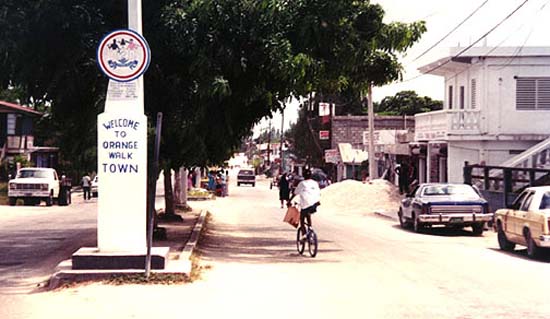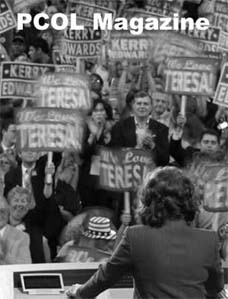
Scott Swearingen taught for two years in the Peace Corps in Belize and came back and moved to Santa Fe, where he works as a physical therapist, but photography remains his creative outlet and his passion
PANORAMIC PROPORTIONS
Aug 13, 2004
The Santa Fe New Mexican
by Paul Weideman
Scott Swearingen's photograph Tent Rocks is a panoramic stunner, full of the tall forms created when wind and water eroded ancient hills of volcanic tuff and pumice and of the scrubby trees around them.
The image, one in a show of his photographs at the Randall Davey Audubon Center, is typical of Swearingen's landscapes. Rather than trying to capture the grand view, as Ansel Adams did, he "hopes to capture a portion of the essence of a place by shooting from within the midst of that place," he said. "I really like focusing in on portions of the landscape rather than the whole scene."
Swearingen did not use a panoramic camera to create Tent Rocks or the other 5-foot-wide prints such as Cloud Forest, which similarly offers great detail in a scene of the short vista, and Petroglyph, a closer study of rock, rock art and lichens. Rather, he uses his medium-format Mamiya 6x7 camera to shoot several vertical photographs, and then either mounts them side by side or has them scanned and digitally assembled into a single long print.
"I have a black-and-white darkroom, and I started with silver- print composites; then when the digital process came along with the quality I wanted, I began going to some digital scanning and printing."
The current exhibition provides examples of both techniques to allow viewers an understanding of the process. The panoramic presentation is not necessarily a specialty, but it's often the photographer's first choice when a subject is encountered.
Swearingen's focus on the natural world is appropriate to the venue. Besides the landscapes, his show features photographs of flora and fauna and "submarinescapes." "Those are my black-and- white underwater shots, mostly of fish. Some are from the Galpagos, some from Belize, and some are aquarium shots," he said. Swearingen loves traveling, but he pointed out that these photos are culled from 10 years of work - he doesn't get to Galpagos often.
Swearingen grew up in Corpus Christi on the Texas Gulf Coast. In college he majored in biology and ecology and minored in photography. "I went through many metamorphoses," he said when asked about his early career interests. "I wanted to do environmental, ecological sort of work, but when I got out of college, Reagan was president, and a lot of people in those fields were being laid off. I taught for two years in the Peace Corps in Belize and came back and taught life sciences in Texas and then went back to school for physical therapy."
In 1990 he moved to Santa Fe, where he works as a physical therapist, but photography remains his creative outlet and his passion. "When I'm out and about, I always have my camera with me, and I just like shooting what interests me in nature. Sometimes it's details I find in the Pecos Wilderness or birds at the Bosque del Apache National Wildlife Refuge."
Randall Davey Audubon Center has Swearingen's photographs hanging in its administration building conference room. The building was originally used to stable Davey's horses. After he died, his sister- in-law Kate Cullum converted it into a gallery to show Davey's paintings. "They're still hanging his work there," Swearingen said. "They took it down to hang my photographs."
The photographer said he hopes to do something like Subhankar Banerjee did in his book of photos of the Arctic National Wildlife Refuge. Banerjee's effort focused on the beauty of nature in hopes of convincing lawmakers to preserve it.
Details
Scott Swearingen, photographs
Randall Davey Audubon Center, 1800 Upper Canyon Road
Exhibit through Sept. 6
No charge, 983-4609

